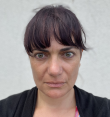|
|
|
Previous webinars > 5th webinar 09/20/20225th EDRA Webinar September 20, 2022, from 4.30 to 6 pm CET
Dr. Björn Schumacher - Institute for Genome Stability in Ageing and Disease, Medical Faculty, Cologne Excellence Cluster for Cellular Stress Responses in Ageing-Associated Diseases (CECAD) Research Centre and Centre for Molecular Medicine (CMMC), University of Cologne, Joseph-Stelzmann-Str. 26, 50931 Cologne, Germany bjoern.schumacher@uni-koeln.de Genome Stability in Ageing and Inheritance: New Perspectives from C. elegans Ageing is an inherent property of somatic tissues. In contrast, germ cells indefinitely perpetuate the genetic information. According to the disposable soma theory, selective pressure has shaped maintenance and repair mechanisms that ensure somatic functioning early in life, while the soma may decay upon successful reproduction. The nuclear genome is irreplaceable and instead requires constant repair amid tens of thousands of genotoxic attacks that a cell experiences on a daily basis. We are studying the differential control of genome stability in the mortal soma and the immortal germline. We are employing the nematode C. elegans as metazoan model to investigate the consequences of DNA damage in somatic and reproductive ageing. While DNA repair mechanisms counteract the accumulation of DNA damage, the organism’s homeostatic processes need to be maintained during development and ageing. We identified epigenetic regulators of H3K4me2 deposition that following DNA repair reinstate protein biosynthesis and homeostasis to promote the organism’s growth and longevity amid DNA damage. We have characterized the organism’ response mechanisms to genome instability in the germline. We discovered germline DNA damage-induced stress resistance (GDISR) that regulates somatic maintenance in response to genomic impediments of germ cells. Vice versa, the soma regulates the genome stability control in germ cells. We have determined that the p53-mediated DNA damage response in primordial germ cells (PGCs) is regulated non-cell-autonomously through the adjacent somatic niche cells. Moreover, we found that sensory neurons regulate the DNA damage response in PGCs. Our data indicate that neurons safeguard from mutational inheritance thus challenging the concept of autonomous control of heritable genomes by germ cells. Environmental condition,such as heat stress, are sensed by somatic stress responses. We showed that intestinal PMK-1/p38 MAP kinase stress signalling determines the quality control of heritable genomes by regulating germ cell apoptosis. We thus established that PMK-1/p38 stress signalling can respond to environmental factors to regulate the occurrence of aneuploidy in the progeny.
Short talk:
Zacharenia Nikitaki - University of Caen Normandy, Cimap-Aria, Ganil, and Advanced Resource Center for Hadrontherapy in Europe (ARCHADE), Caen, France and DNA damage Lab, School of Applied Mathematics and Physical Sciences, National Technical University of Athens, Greece
The evolution of DNA damage repair (DDR)detection methodologies DNA damage repair studies (DDR) can be divided into direct and indirect. Direct regards when the detection targets the lesion itself and indirect when the detection is mediated by a DNA repair enzyme. Moreover, DDR can be: in vitro, e.g., flow cytometry, Agarose gel electrophoresis Southern blot, chromatography, This talk focuses on the in situ techniques and emphasizes their evolution upon the revolutionary discovery of γH2AX DNA repair enzyme (1998). We will discuss several microscope configurations in relation to the analysis power they provide: from transmission microscopy to super resolution fluorescence and single molecule detection techniques, including the detection of clustered DNA damage and colocalization. The latest advances will be presented along with examples of DNA repair studies from the recent bibliography. Besides the power of the microscopy apparatuses, another aspect that enhances the detection outcome in terms of resolving power is the existence of single molecule techniques that take the advantage of imaging. The aim of the talk is to trigger the interest of researchers to new techniques that the are not necessarily of high cost (Stochastic Techniques for Single Molecule Detection).
|




